I am making a program that includes a GUI. For some reason, the JButton objects that I have created are not showing up onto my JFrame when I run the program. Here is the code:
import javax.swing.*;
import java.awt.*;
import java.awt.event.ActionEvent;
import java.awt.event.ActionListener;
public class ReverseAStringMain extends JPanel {
private JButton enterButton, exitButton;
private JTextField textField;
private JPanel buttonPanel;
private JTextArea textArea;
public ReverseAStringMain(){
JButton enterButton = new JButton("Enter");
JButton exitButton = new JButton("Exit");
enterButton.setPreferredSize(new Dimension(60,60));
exitButton.setPreferredSize(new Dimension(60,60));
ButtonListener listener = new ButtonListener();
enterButton.addActionListener(listener);
exitButton.addActionListener(listener);
buttonPanel = new JPanel();
buttonPanel.setPreferredSize(new Dimension(200,50));
buttonPanel.setBackground(Color.black);
buttonPanel.add(enterButton);
buttonPanel.add(exitButton);
textField = new JTextField();
textField.setSize(200, 100);
textArea = new JTextArea();
textArea.add(textField);
add(buttonPanel);
add(textField);
}
//Creating a ButtonListener class that implements the ActionListener interface
private class ButtonListener implements ActionListener{
@Override
//Overriding the ActionPerformed method of ActionListener
public void actionPerformed(ActionEvent action) {
if(action.getSource()== enterButton)
enterButton();
if(action.getSource()== exitButton)
System.exit(0);
}
}
private void enterButton() {
// TODO Auto-generated method stub
}
public static void main (String[] args){
JFrame frame = new JFrame("Raj's Reverse a String Program");
frame.setBackground(Color.white);
frame.setVisible(true);
frame.setResizable(false);
frame.setLocationRelativeTo(null);
frame.setSize(new Dimension(600,600));
//frame.pack();
frame.setDefaultCloseOperation (JFrame.EXIT_ON_CLOSE);
frame.getContentPane().add(new ReverseAStringMain());
}
}
If there are any problems or improvements I can make in my code, please let me know!



